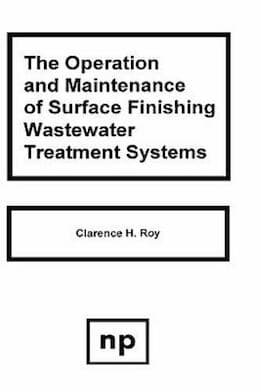
-----
Can waste hydrochloric acid be used for hex chrome reduction
Q. I work in the environmental industry with several steel producing companies. We have found one of our clients, who typically uses sulfuric acid to complete hex chrome reduction on a waste, wondering if hydrochloric acid can be used. We are wanting to use waste hydrochloric acid from another facility but have been concerned that the reaction my not completely do the trick. Can we use waste hydrochloric acid to complete hex chrome reduction prior to final chemical neutralization of the current waste?
Matt FridayEnvironmental Coordinator - Pittsburgh, Pennsylvania, USA
2004
|
A. You may use the spent hydrochloric acid to lower the pH to the level required for chemical chromium reduction but it will not reduce the chromium by itself. You will still need to add a chromium reducing agent to the process. There may be some accidental reduction as the iron in the acid, catalyzed by the chloride ion, will cause some reduction. But don't expect it to finish the whole job.  Paul Morkovsky - Shiner, Texas, USA 2004 A. There are two issues intertwined here. No mineral acid will reduce hexavalent chromate to trivalent--which is a necessary step in the treatment sequence. For that you need a reducing agent, sodium bisulphite being the most commonly used.  Ted Mooney, P.E. Striving to live Aloha finishing.com - Pine Beach, New Jersey Ted is available for instant help or longer-term assistance. 2004 A. Any strong acid, including hydrochloric acid, can be used to reduce the pH in a chromium reduction reactor. However, fumes and extremely corrosive nature of hydrochloric acid can make it less desirable to use unless the tanks and the room are extremely well ventilated. As a small bonus, any ferrous iron in the waste acid will also reduce chromium and reduce the amount of bisulfite needed. Incorporated Lyle Kirmanconsultant - Cleveland Heights, Ohio 2004 |
A. Another thing to take into consideration before using hydrochloric acid would be whether or not any of your basins are lead lined. I have seen several basins over the last few years that were made for chromic acid waste that were lined with lead.
An interesting story: I was working at a WWTP that served a plating shop. We had a real problem with lead in the effluent, and couldn't seem to figure out where the lead was coming from. We followed the flow of the wastewater, testing for lead in each basin. We found the first occurrence of lead in a lead-lined pH adjustment basin. I did a little research, wondering why someone would put in a lead-lined tank in the first place.
It seems that lead is a great liner for sulfuric acid based chemistry, as our chromic acid was. This is because lead gets a coating of lead oxide much like iron gets a ferric oxide coating, or rust. Sulfuric acid will not remove this lead oxide coating, which actually serves to protect the lead from leaching. However, hydrochloric acid, nitric acid, and cold alkali solutions will remove the lead oxide coating and will cause the lead to leach into your effluent. Since we couldn't stop the plating shop from using these chemicals, we put an epoxy coating over the lead and have not had another problem with lead in over three years!
- Atlanta, Georgia, USA
2004
We are experiencing a possible masking of ORP & passed hex chrome out of our facility. What masks ORP and restricts the conversion from hex to tri-chrome? We had a demand for bisulfite that was apparently satisfied before our chrome was reduced. EMERGENCY Help needed.
Pete A. Zervos- Gary, Indiana
2005
Hello Pete,
An ORP meter reads oxidation-reduction potential and will see any reducing agent as having satisfied the need (including for example cyanide), and turn the reducing agent pump off. That is one reason why waste materials that need oxidation (like cyanide) must be kept separate from waste materials that require reduction (like hexavalent chromium). Usually the color is a good indication though; if there's a trace of yellow or amber to your chrome waste instead of light green-blue, there's hex chrome in it -- stop the discharge! The light green-blue will precipitate out when you raise the pH. Good luck.
This is only a public forum, not a consultancy, and qualified readers may not see your posting for a while, and may or may not decide to respond to it. It's not the best place to get emergency help :-(
Some consultants are listed at www.finishing.com/consultants/, or environmental consultants might be found in your local yellow pages.

Ted Mooney, P.E.
Striving to live Aloha
finishing.com - Pine Beach, New Jersey
Ted is available for instant help
or longer-term assistance.
2005
Reducing trace amounts of hexavalent chromium on cupped parts
Q. I am currently working on a project that involves stains on Nickel Chrome electroplated parts. The parts have a blind hole and on the rack, it carries solution. We find that the part is carrying chromic acid from the plating tank through the rest of the process and is leaking out onto other parts after unracking causing stains. Since the line is old and changing the rack design or is extremely difficult, a more obtainable option is to reduce the hexavalent chrome to trivalent in the rinse tanks. Supposedly the trivalent chrome will be easier to remove and be less damaging to the part if staining occurs. Most reducers require a low pH, but this is allowing rust formation inside the blind hole where no plating is present, just bare steel. What would you recommend as a reducing make up to convert the chrome as well as protect the steel? We are experimenting with sodium metabisulfite as well as another make up containing hydrazine with varying pH's. Any information or insight will help. Thank you.
Mike PliszkaProcess Engineer - Buffalo, New York USA
December 29, 2014
by Clarence Roy

on eBay or Amazon
or AbeBooks
(affil link)
A. Hi Mike. When I was with Lancy Laboratories several decades ago we commonly installed "integrated treatment" after chrome, to reduce and precipitate the chrome right in the rinse tanks. My recollection was that we used hydrazine, but I am looking at a diagram in Cherry's "Plating Waste Treatment" ⇦[this on eBay, Amazon, or AbeBooks affil links], which suggests that a mixture of sodium carbonate ⇦ on eBay or Amazon] and sodium hydrosulfite ⇦ on eBay or Amazon zincaffil links] is used. In any case, I don't recall or have documentation with exact details. Good luck.
Regards,

Ted Mooney, P.E.
Striving to live Aloha
finishing.com - Pine Beach, New Jersey
Ted is available for instant help
or longer-term assistance.
December 2014
A. I think that Ted gave you a very good answer. I would also recommend that you improve the agitation in the rinse, especially if it is a deep blind hole.
Lyle Kirmanconsultant - Cleveland Heights, Ohio
December 30, 2014
Q. There definitely seems to be many different options regarding reducing agents, but I am looking for the best in line option. Another plating company I spoke with uses sodium metabisulfite in line controlled with an oxidation-reduction potential meter. I am wondering if anyone has had any similar experiences. I appreciate your input Ted. I will be running laboratory experiments this week.
Lyle, would you have any other suggestions for agitation improvements? Deep blind holes are common here and are definitely not aided by the post style rack design. We currently have a pretty vigorous air agitation system, which probably cannot be increased without overflow or splattering. For some reason, whether it is the post in the blind hole, the angle of the part, or the threaded portion inside the blind hole, there always seems to be carry over after the chrome drag out and rinses. Once again any input you may have will be useful. Thanks.
- Buffalo, New York USA
January 5, 2015
A. Mike,
My shop currently uses a tank such as the one Ted described using the most common Cr6+ reducing agent. We have an ORP meter and a dosing pump installed on the tank. The meter not only controls the dosing pump but a secondary set point activates a fresh water feed whenever it is below the point of reduction so we can keep the tank cleaner.
It works very well. Daily testing has shown that no hex chrome escapes our facility

Tim Hamlett, CEF
- West Palm Beach, Florida, USA
January 8, 2015
Q, A, or Comment on THIS thread -or- Start a NEW Thread